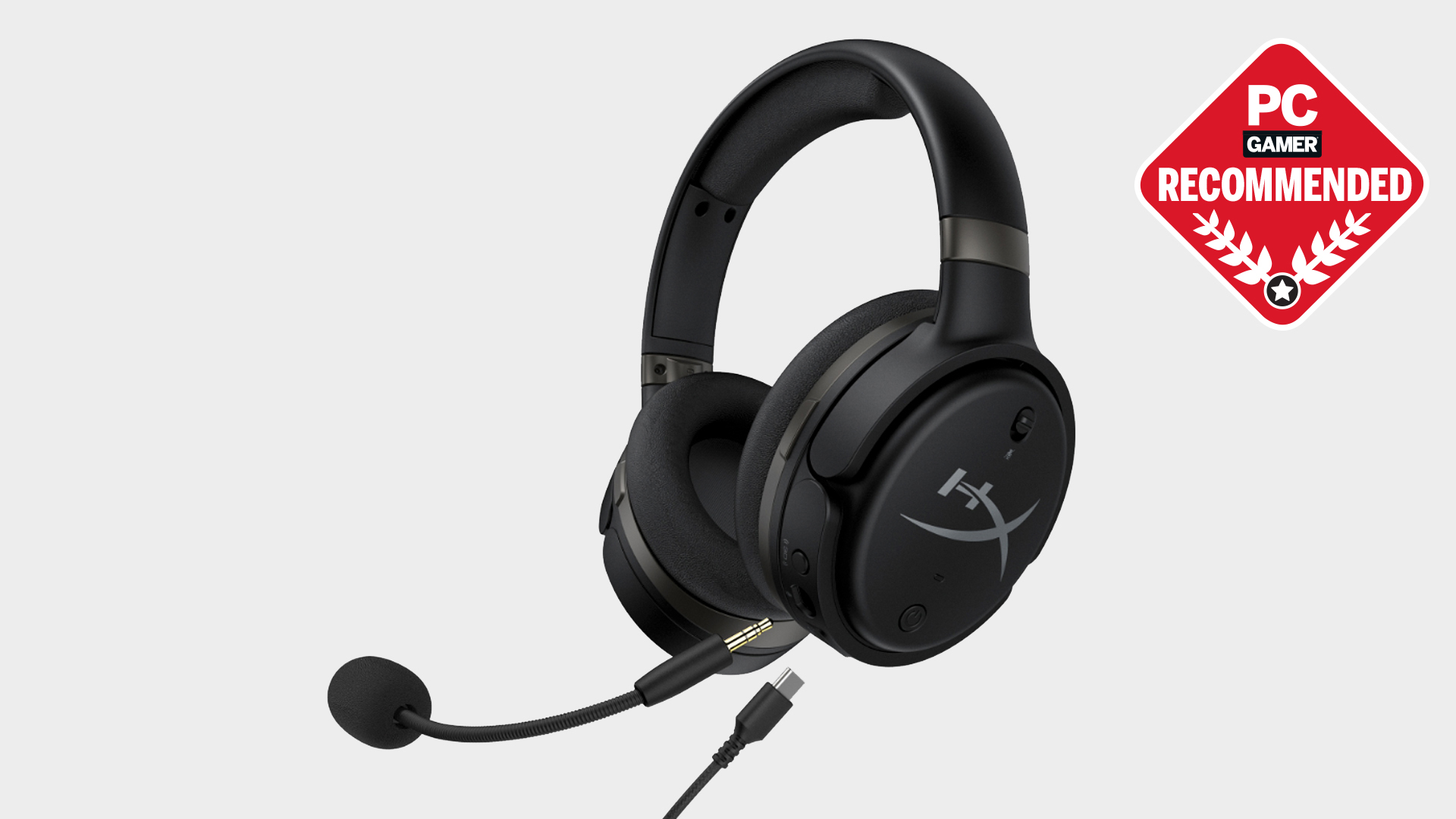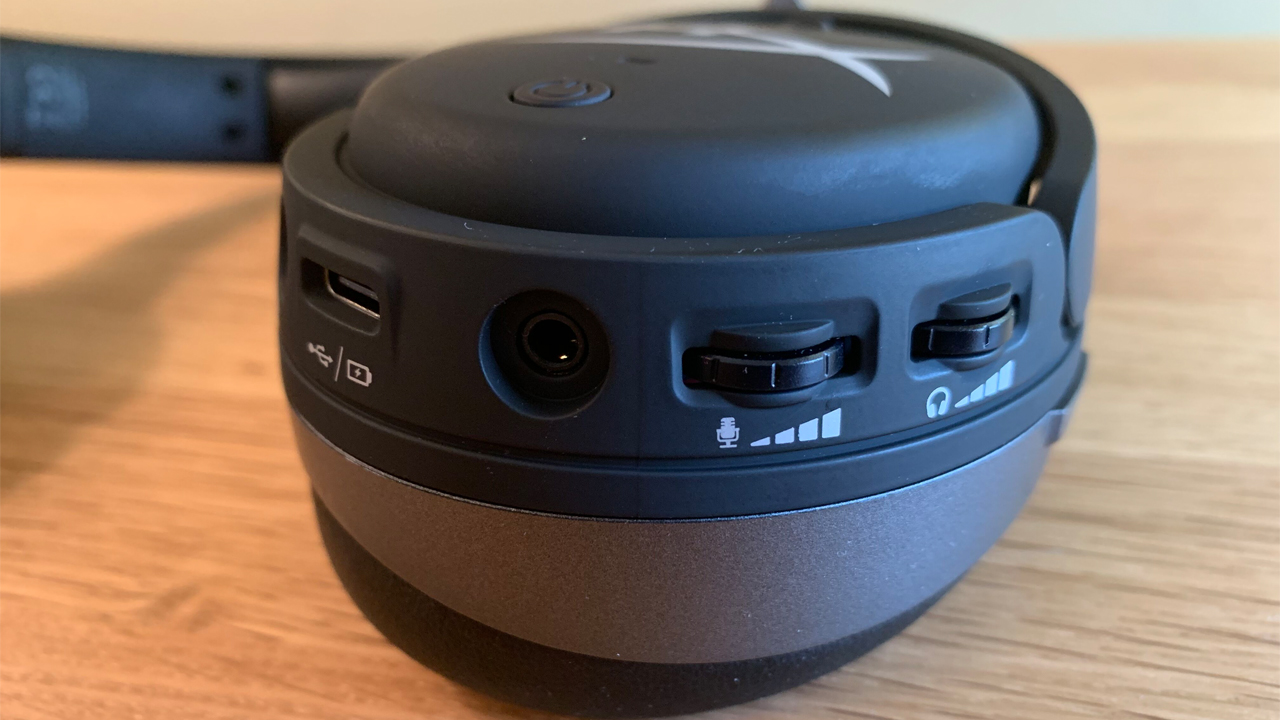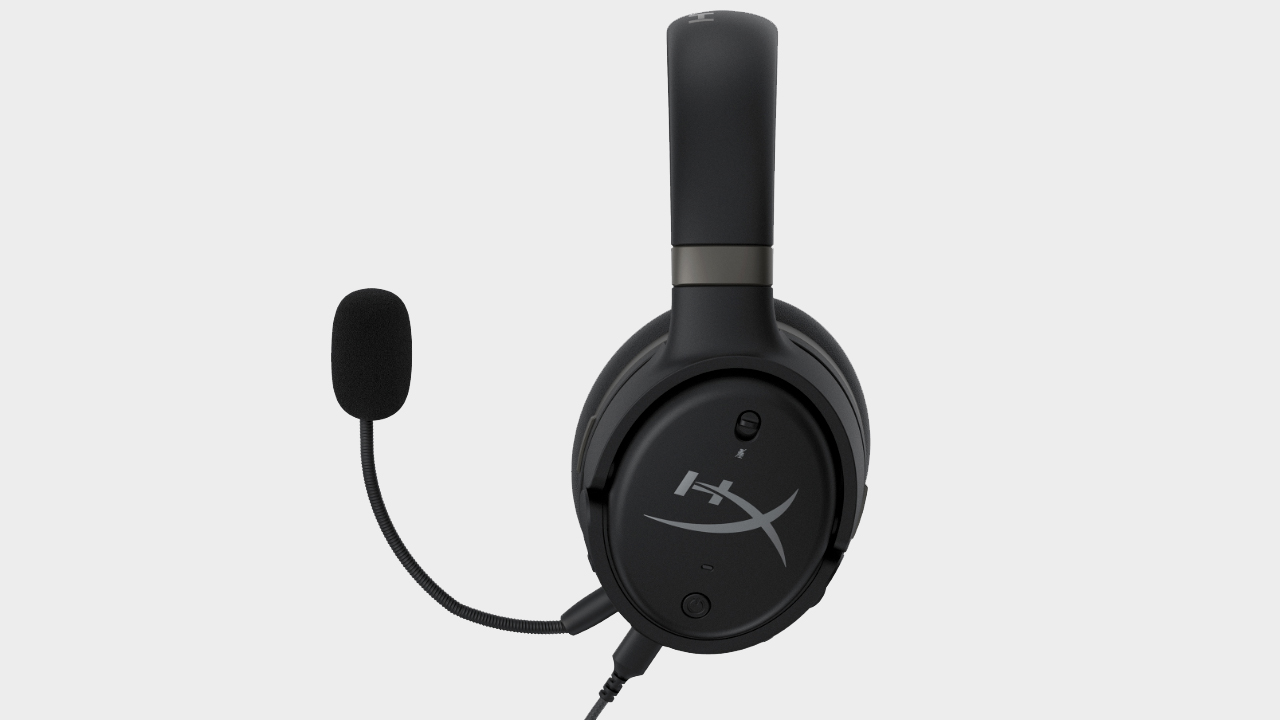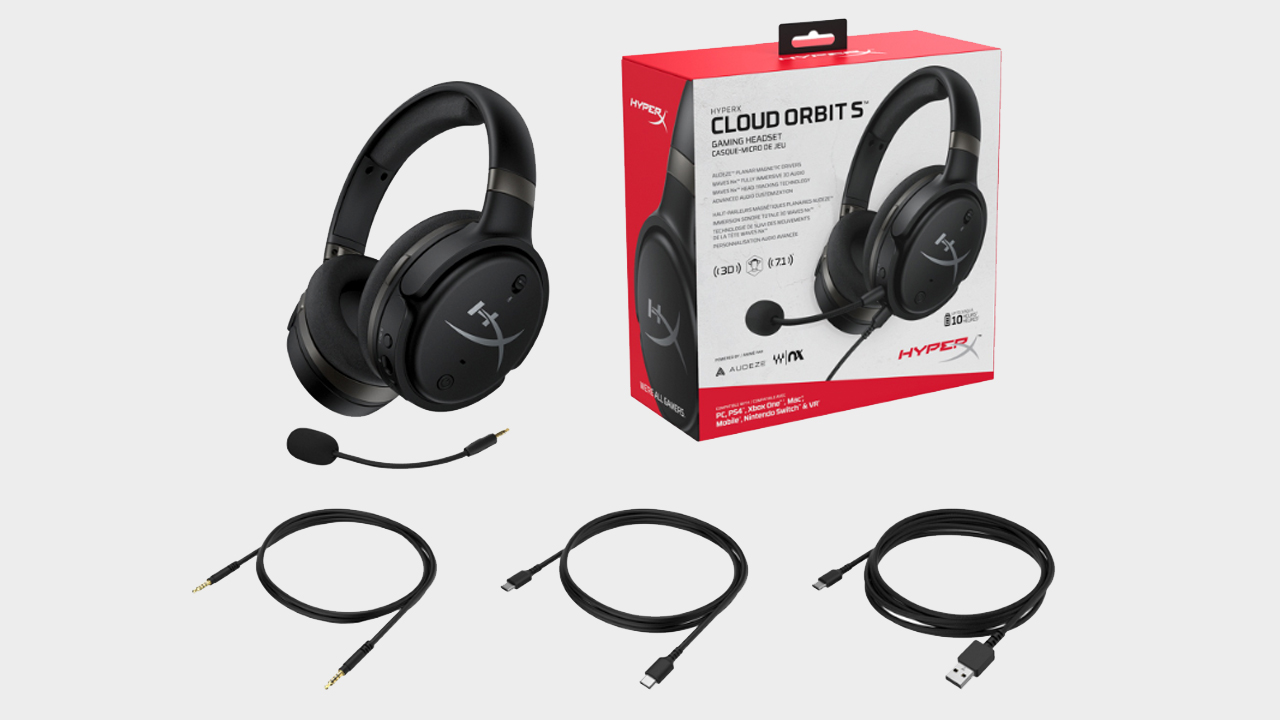Our Verdict
The Cloud Orbit S delivers the kind of clean and clear surround sound that lets you hear every detail of every sound.
For
- Incredibly clear sound
- 3D head tracking is very accurate
- Nice, comfortable build
- Supports 3.5mm, USB-A, and USB-C connections
Against
- Expensive for a wired headset
- Software can be tough to figure out
PC Gamer's got your back
Last year, high-end audio company Audeze shipped the Mobius gaming headphones, an audiophile's take on gaming audio. Now, Audeze has teamed up with HyperX to put almost all of that same tech in a similar (and somewhat cheaper) gaming headset, the Cloud Orbit S. The Cloud Orbit S packs in all of the exciting signature features that made the Mobius interesting and enticing: Planar Magnetic drivers, an older way of delivering sound that's normally reserved for more expensive audio gear, and 3D head-tracking to facilitate digital surround sound. With plush padding on the strap and the cans, and add a detachable mic, this is one very promising headset.
The Cloud Orbit S is quite a bit more expensive than most of HyperX's other headsets, and you can tell that it's likely to be among the best gaming headsets before you even turn it on. The cans and headband both feel sturdy and well-built, with matte black finish that gives it a classic, distinguished look. When you put them on, memory foam ear cushions make it comfortable to wear for long stretches. You don’t get the feeling that your head’s being swaddled, which is a shame because I like that feeling, but it is much easier to forget you're wearing them in the heat of the moment.

Of course, this is a headset review so sound quality is the most important factor here: luckily, it is also the Cloud Orbit S' best quality. Above all else, the sound comes through extremely clear. Voices, bullets flying, strange hissing murmurs (I've been playing a lot of Control). It’s easy to hear and distinguish the layers of texture in game audio, music, podcasts—whatever you’re listening to.
In keeping with the spirit Audeze's high-end audio leanings, the headset is a little less base-forward than most gaming headsets I've used. That isn't necessarily a bad thing, unless you expect to shake your eardrums when something goes boom. That said, there is a "ballistics" setting if you like your games extra bass-y. You can swap among the Cloud Orbit S' eight EQ profiles using onboard controls or HyperX's "Orbit" software.
The microphone is similarly very clear. As with many adjust-wire booms, I found it could be a bit tricky to get exactly where I wanted it, but your voice comes in nice and smooth once you do. I also appreciate that the mic is detachable, as I prefer to take the mic off when I'm not playing multiplayer games.

The differentiating factor may be in the 3D positional audio. Using Audeze's Waves NX 3D sound technology, the Cloud Orbit S tracks your head movements to simulate 7.1 surround sound. Moreover, it uses your position to adjust what sound should be loudest when you turn your head to a different forward position. It's subtle, but I found myself turning my head more—rather than shifting my eyes—to respond to sound, which is the strongest endorsement I can give this kind of feature.
Not everything about the situation is great. HyperX config software, which is nearly identical to Audeze's software for the Orbit, can be a bit obtuse. Configuring the 3D tracking, which includes typing in your head circumference, can appear a bit overwhelming. The sound profile selection menu has no descriptions for what each EQ setting does. There's some help available in the HyperX Orbit software manual, but you have to go find that on HyperX's website: amost players would be better served by clearer UI and a short tutorial on how everything works.
The Cloud Orbit S is $70 cheaper than the Mobius and has some technical downgrades as a result. Most notably, the Mobius can connect to a PC wirelessly via Bluetooth, but the Cloud Orbit S requires some kind of wired connection—you can choose between 3.5mm, USB-A, or USB-C. It's a fair tradeoff, I'd say, and maybe even a boon when you factor in that the Mobius 3D audio tech didn’t work over a wireless connection anyway, one of the reasons it didn't make our list of the best wireless gaming headsets.

On the Cloud Orbit S, not all audio connections are created equal, though. If you connect via a 3.5mm jack, you’ll have to contend with the fact that the headset requires power to run its 3D audio. The battery runs to about ten hours, which is long enough to last through any game session, but may require you to charge between every use. But that's a minor inconvenience that you can get around if you’re willing to give up a USB port in your gaming PC.
All in all, the Cloud Orbit S works well in every way that counts. It sounds superb, gives you clear surround sound, and feels comfortable on your head. If you can accomplish those three things as well as the Cloud Orbit S has, I'd say you can cut it a little slack on the small stuff like the lack of wireless.
The Cloud Orbit S delivers the kind of clean and clear surround sound that lets you hear every detail of every sound.


